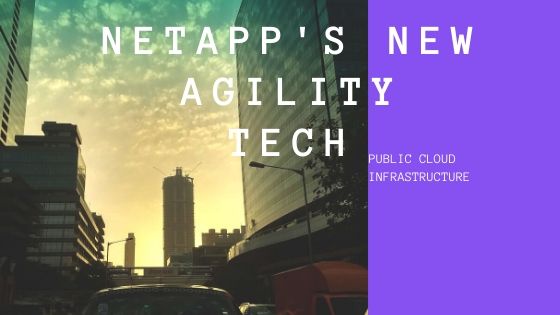 Today, major Cloud data service provider NetApp has announced its interest to acquire Cloud Computing and Cost Optimization platform – Spot. Spot, which was recently rebranded from Spotist, is a leading provider of computing management and cost optimization solutions for the public Clouds.
Today, major Cloud data service provider NetApp has announced its interest to acquire Cloud Computing and Cost Optimization platform – Spot. Spot, which was recently rebranded from Spotist, is a leading provider of computing management and cost optimization solutions for the public Clouds.
Getting Bold with Public Clouds
When the risks grow, agility and flexibility are the key factors that customers look in their service providers. Public Cloud business is no different. Today, speed is the new benchmark for Public Cloud assessment, even as storage and computing standards continue to break all barometers of performance testing and optimization.
In 2015, Spot came into the Public Clouds domain with a powerful vision– “to modernize the way companies use Cloud Infrastructure services using Analytics and Automation.” By 2020, it had achieved it– and now, it is getting absorbed into a company that is known for its High Performance Cloud Storage and Cloud-native applications – NetApp.
Application-as-a-Service Gets Real in Edge, Core and Cloud
By acquiring Spot, NetApp is poised to mobilize data-driven speed at scale for business continuity. The pair will combine the analytics and automation capabilities of the companies to further establish leadership in the Application Driven Infrastructure. The future looks set for an optimized Cloud Storage and simplified IT across Edge, Core and Cloud.
In an official blog, Spot CEO and Founder Amiram Shachar divulged how his meeting with NetApp’s Anthony Lye opened up the discussion for collaboration. Anthony is NetApp’s SVP of Cloud business.
Amiram writes, “We are entering into this partnership because we hold the same vision: helping application owners embrace and take advantage of the full power of the cloud. As Anthony writes in his blog, cloud infrastructure has been immensely valuable to application developers, providing them the ability to get resources almost instantly at any time, freeing developers from the constraints of physical hardware.”
What Do Businesses Demand the Most from their Cloud Service Providers?
When a majority of business roadmaps revolve around agile digital transformation initiatives, NetApp’s acquisition of pot makes sense. In the recent months, we have seen massive confluence of emerging technologies such as AI, RPA, IT Automation and blockchain disrupting the IT and App infrastructure. Today, most companies have moved their operations to Cloud, even as work from home or remote locations seems to be the obvious “normal” in the last few weeks. Much before COVID-19 made its horrific impact on the business, we realized that remote workplace and IT Management are here to stay and become a norm.
In today’s environment, Public Clouds are built to offer speed, agility and flexibility– providing users with the abundant choice to navigate through challenging scenarios. However, Public Clouds still need to be optimized for performance. Non-optimization of Public Cloud can cost businesses, especially now, when slowing down operations can have a devastating effect on the economy.
To address this challenge, businesses look at an Application Driven Infrastructure (AID). An AID translates the application’s workload patterns and drives the best possible level of performance and cost for storage and compute. It is all done while maintaining the contracted service-level agreement (SLA) and service-level objective (SLO).
Read More: Iguazio and NetApp Collaborate to Accelerate Deployment of AI
Optimized Cloud, Optimized Infrastructure= Happy Customers!
NetApp-Spot combination is expected to deliver customers with 90% saving on their compute/storage space costs, in addition to further speeding up the Public Cloud’s adoption rate at an enterprise level.
At the time of this announcement, Anthony Lye, senior vice president and general manager, Public Cloud Services, NetApp said –
“The combination of NetApp’s leading shared storage platform for block, file and object and Spot’s compute platform will deliver a leading solution for the continuous optimization of cost for all workloads, both cloud native and legacy. Optimized customers are happy customers and happy customers deploy more to the public Clouds.”

Currently, NetApp already provides modernized tools for visibility and automation. The automation suite helps to drive continuous optimization of workloads in a single platform while maintaining both SLA and SLO. By bringing together the power of Automation and Analytics in IT management, users can focus on DevOps, CloudOps, and FinOps goals more efficiently. In total, AID for Public Cloud eases complexity of managing, scaling, tuning and optimizing data storage and computing resources so even under the most challenging budget conditions.

Amiram Shachar, Founder and CEO, Spot. “We look forward to joining the NetApp family and building together the future of Application Driven Infrastructure and helping customers to deploy more workloads in the Cloud.”
As a NetApp company, Spot is expected to offer modernized solutions in compute and storage for both traditional IT buyers with enterprise applications, cloud-native workloads and data lakes.
Spot, formerly Spotinst, is a leading provider of software that empowers CloudOps team to get the most out of their cloud. Its product portfolio helps companies optimize and automate their cloud use to maximize the value and availability of their cloud infrastructure while minimizing waste. Through the use of actionable visibility and insight, Spot continuously and automatically improves efficiency in real-time.
To share your recent IT insights and automation quotes, please write to us at sghosh@martechseries.com












Comments are closed.